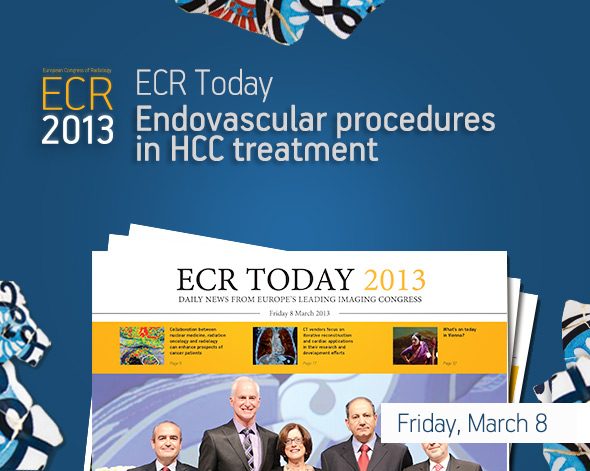
Watch this session on ECR Live: Friday, March 8, 08:30–10:00, Room F1
There are a wide range of treatment options available when dealing with hepatocellular carcinoma (HCC), ranging from interventional and endovascular procedures to surgical interventions such as liver transplantation. The main reason for performing endovascular procedures when treating patients with hepatocellular carcinoma is the fact that liver neovascular networks are nourished exclusively by the arteries.
Liver tumours, both primary and metastatic, are almost entirely supplied by branches known as neo-vessels, which originate in the hepatic arteries. The surrounding peritumoural liver parenchyma is vascularised mainly by portal vein branches. When an HCC is larger than two centimetres in diameter the afferent vessel can be identified and then targeted via an arterial endovascular approach. These unique characteristics – dual vascular supply and the ability to identify the afferent vessels – are the rationale behind the use of endovascular treatments, and several different techniques have been developed over the last 30 years. Among the most frequently used are the infusion of chemotherapy and the introduction of particles, either as occluding devices or as carriers of an active agent, which attacks the tumoural cells and surrounding neovessels.

Read more…

Dr. Alexander Sachs, the Rising Stars representative on the ESR’s Undergraduate Education Subcommittee, talked about his numerous projects and his passion for teaching in an interview with ECR Today.
ECR Today: When did you first take part in the Rising Stars programme?
Alexander Sachs: I first took part in the Rising Stars programme in 2011. I applied to present Sono4You, an ultrasound peer-teaching student project, which I had become involved in. It was the first time I gave a presentation in front of a large audience, but I thought I would just give it a try and so I took a practical approach.
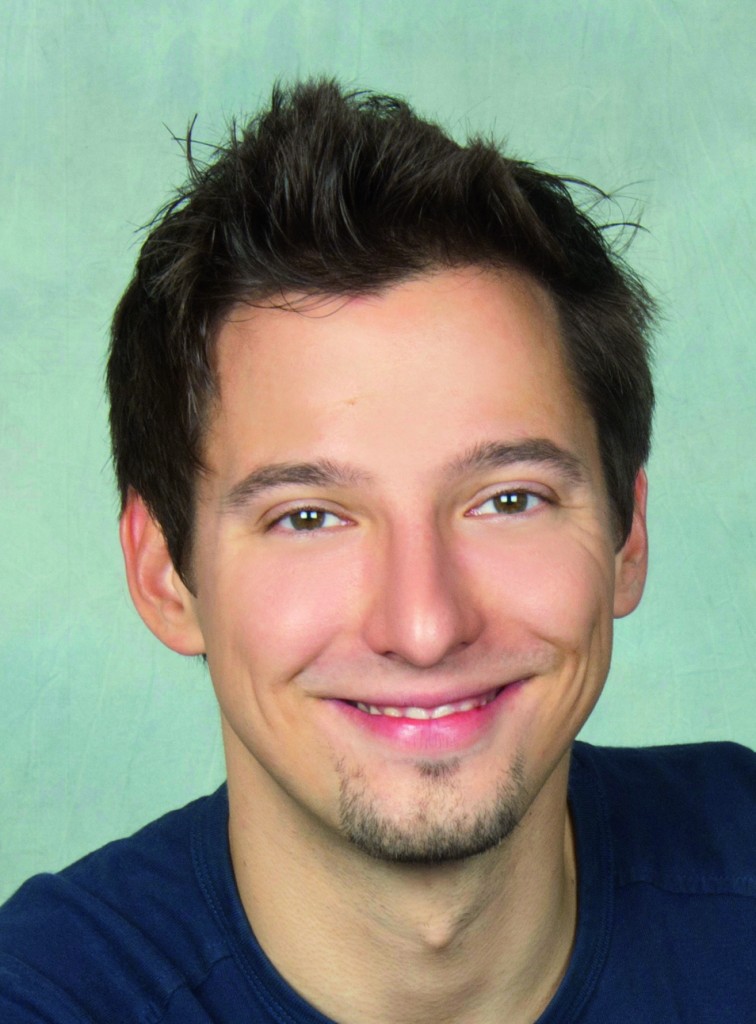
Dr. Alexander Sachs from Vienna is the Rising Stars representative on the ESR’s Undergraduate Education Subcommittee.
ECRT: It seems it paid off since you were elected best student presenter.
AS: Yes, it did have some positive effects. The year after, the ESR asked me if I wanted to coordinate the Hands-on Ultrasound Workshops at ECR 2012, which are strongly connected to the Sono4You tutorials. It was a great opportunity. It went really well and we are repeating the experience this year, with one advanced session and three basic workshops.
I like the idea of raising young people’s interest in radiology. In doing so, I am in contact with many people internationally, be they students or teachers. I really enjoy meeting people of different ages with different ideas; it is quite interesting to see what happens, how they connect, and the results of their cooperation.
ECRT: Can you please tell us about some of the new features of Rising Stars at ECR 2013?
AS: The Sono4You workshops will offer more advanced content to match the level of first-year radiology residents. Generally, the contents will be more interesting; thanks to the feedback we received last year.
Another nice development is that people have become more motivated to enrol as tutors for the peer-teaching sessions. Last year, I really had to motivate people to do so, but now it is much easier, there is a much bigger interest on their part. More students are participating in the programme every year, and I am happy to add my experience or work to this initiative.
Read more…
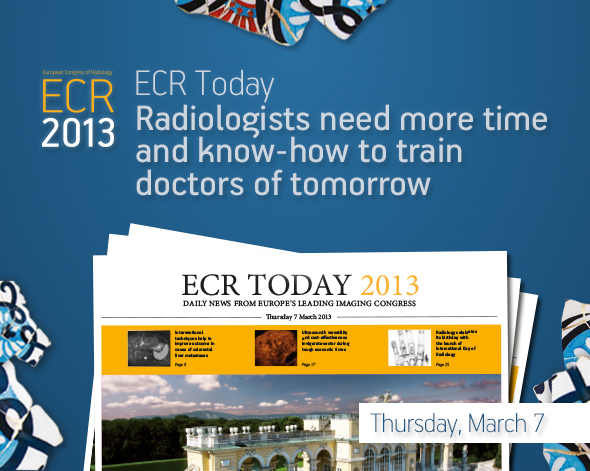
Watch this session on ECR Live: Thursday, March 7, 16:00–17:30, Room F1
Postgraduate radiology training is high on the agenda in Europe, with a great deal of attention in recent years being given to the harmonisation of educational standards across the continent, but there is a growing feeling within the discipline that radiology should not lose sight of the equally important issue of undergraduate education. Exposing undergraduates to radiology not only serves the obvious and vital purpose of inspiring potential radiologists, but also ensures that students who go on to follow careers in other disciplines are well versed in what radiology can offer and how it operates. In broad terms, the net result is a combination of helping to secure the discipline’s future and making life easier for its practitioners.
However, making sure undergraduates are given sufficient contact with radiology is no easy task. The competing clinical, managerial and academic demands on radiologists’ time and skills, which increase with every year, mean that any additional activities run the risk of being excluded. The time and resources needed, not just to teach, but also to carry out the necessary preparation for effective teaching, can often make it impossible to fit in to an already hectic schedule.
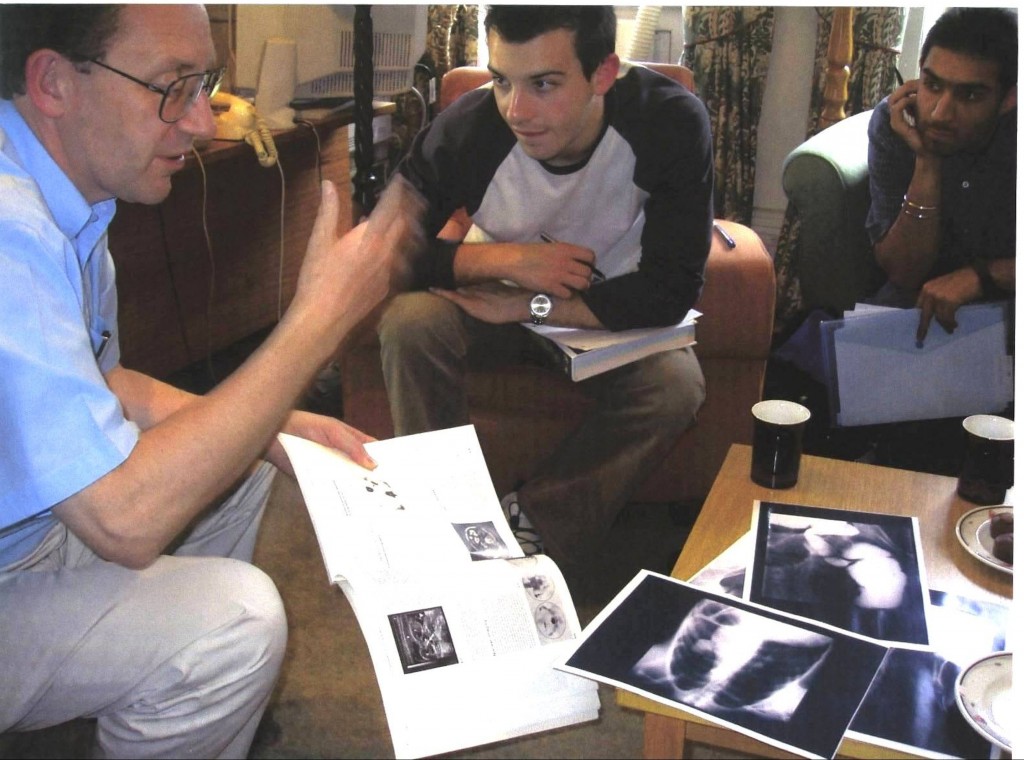
Professor Stephen J. Golding (left) from Oxford will chair today’s Professional Challenges Session on undergraduate teaching.
Read more…

Watch this session on ECR Live: Thursday, March 7, 16:00–17:30, Room D2
Over the past decade, technological improvements have led to the widespread use of imaging modalities in the prediction, diagnosis and follow-up of coronary disease. Radiologists now have the ability to obtain information on the structure of cardiac muscle with MRI and evaluate cardiac arteries with CT, while hybrid imaging will soon allow them to do both. Cardiac CT will also provide more functional information in the future, and its use will continue to grow. Experts will present the newest and upcoming possibilities of cardiac imaging today at the ECR.
Advances in cardiac CT have brought its use in clinical routine to unprecedented levels. The main reason is that image acquisition optimisation strategies allow radiologists to assess blood vessels with the same efficiency as coronary angiography, non-invasively and almost instantaneously.
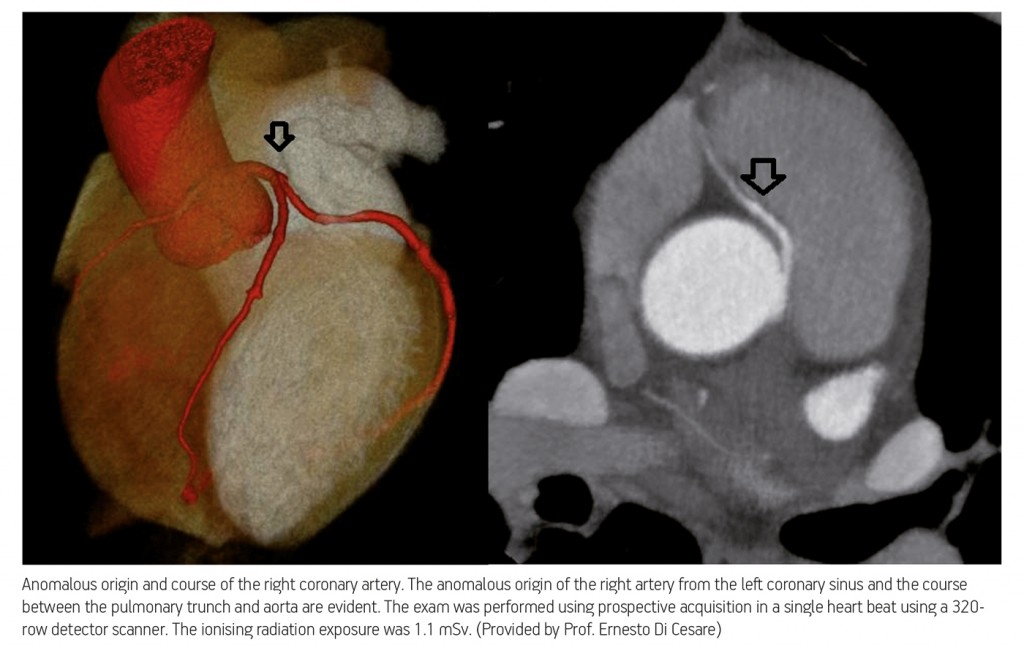
Read more…







